History & Geology
Can You Recognize Valuable Ores?
August 2016 by Chris Ralph
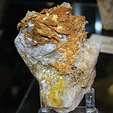 The process of recognizing ores all starts with being able to recognize some basic minerals and knowing what hard rock ore looks like in the districts where you prospect.
The process of recognizing ores all starts with being able to recognize some basic minerals and knowing what hard rock ore looks like in the districts where you prospect.
Heavy Sands Mining
Lately my mind has been involved with group 4 of the transition elements, namely titanium, zirconium, and hafnium. They all have similar chemical properties. Of greatest interest to economic geologists and miners is that these valuable elements often occur together in sands.
Gold Placers of the Kenai Peninsula, Alaska
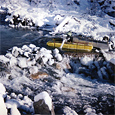 The biggest obstacle is that like many streams on the Kenai Peninsula, high water during the summer months from snow melt and rain can make dredging nearly impossible. The best dredging is in the colder months of the year.
The biggest obstacle is that like many streams on the Kenai Peninsula, high water during the summer months from snow melt and rain can make dredging nearly impossible. The best dredging is in the colder months of the year.
Electrum: Gold and Silver Together
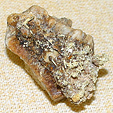 ...if you are out prospecting and find something that looks very much like a nugget but has an odd greenish-gray cast to it, don’t be too quick to simply toss it aside as junk.
...if you are out prospecting and find something that looks very much like a nugget but has an odd greenish-gray cast to it, don’t be too quick to simply toss it aside as junk.
A New Look at Old Mines
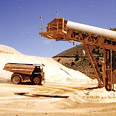 Exploration companies are actively looking for properties with profitable potential, even if the ground was once cast off as too low in grade to be economically viable. This is especially true in states that are reasonably friendly toward...
Exploration companies are actively looking for properties with profitable potential, even if the ground was once cast off as too low in grade to be economically viable. This is especially true in states that are reasonably friendly toward...
How to Recognize Hard Rock Gold Ores
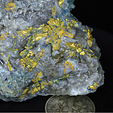 I regularly get inquiries along the line of: “Hey, I found this rock, and I think it might be gold ore. How can I tell?” Prospectors are always on the lookout for gold-bearing rocks that may be the source of any nearby placer gold.
I regularly get inquiries along the line of: “Hey, I found this rock, and I think it might be gold ore. How can I tell?” Prospectors are always on the lookout for gold-bearing rocks that may be the source of any nearby placer gold.
The Mysterious Telluride Minerals
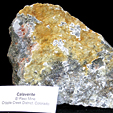 …let’s dive in and take a closer look at these rich gold and silver-bearing minerals to find out what they are, where they form, and how to identify them.
…let’s dive in and take a closer look at these rich gold and silver-bearing minerals to find out what they are, where they form, and how to identify them.
Subscription Required:
The Bawl Mill
• Legislative and Regulatory Update
• Ask The Experts
• Ask The Experts
• Revisiting the Rocker Box
• Follow Up to "Just One More Time"
• The Highs and Lows of Drywashing
• Successful Detecting Requires Attention to Detail—Part I
• Panning for Gold on Canyon Creek
• China Closing More Than 1,000 Mines
• Habits, Procedure, and Where Is The Gold?
• Exploring A Historic Lode Mine
• Mining Stock Quotes and Mineral & Metal Prices
• Melman on Gold & Silver
Free:
MMAC & PLP Update







